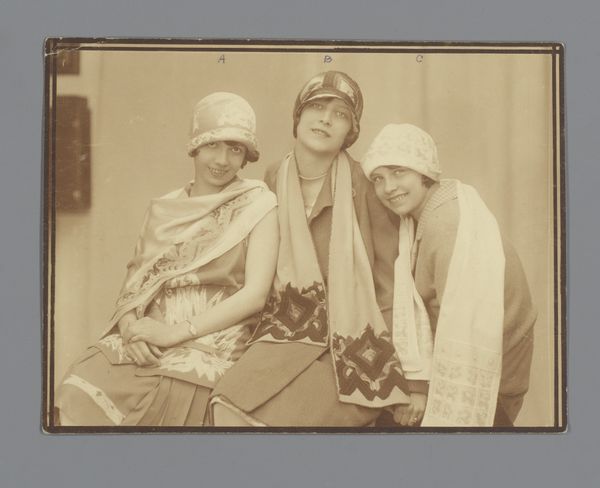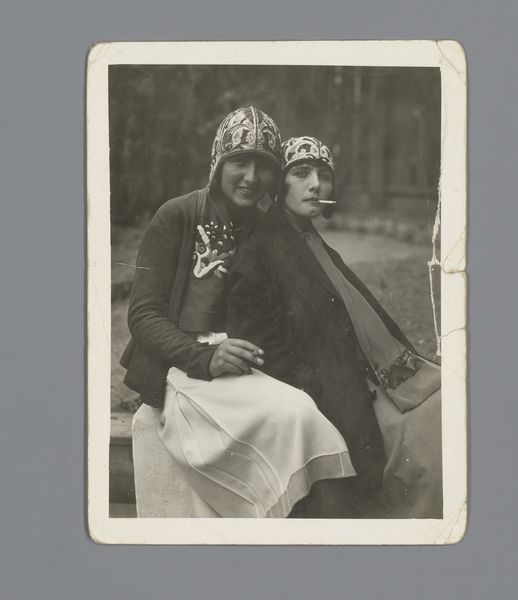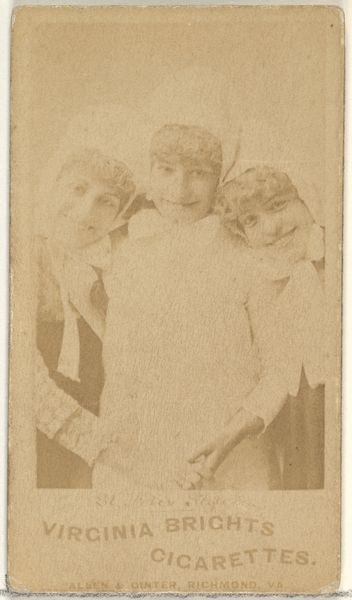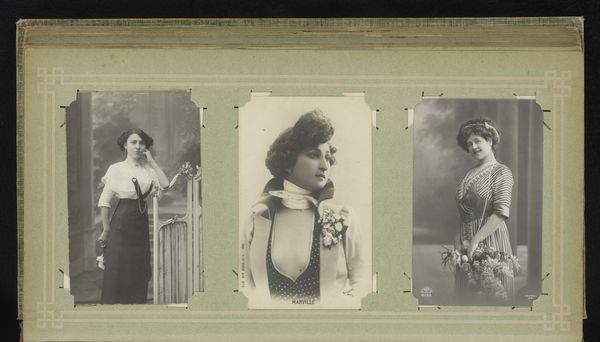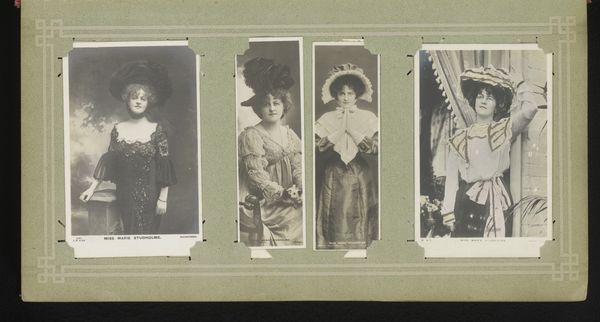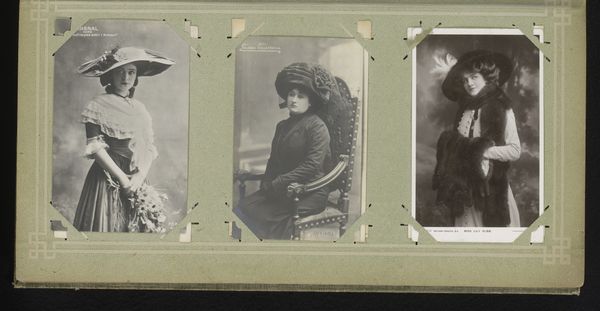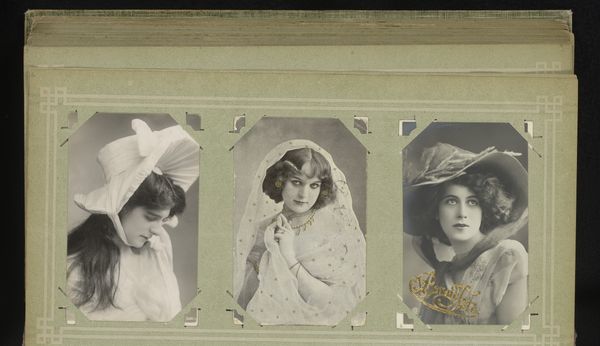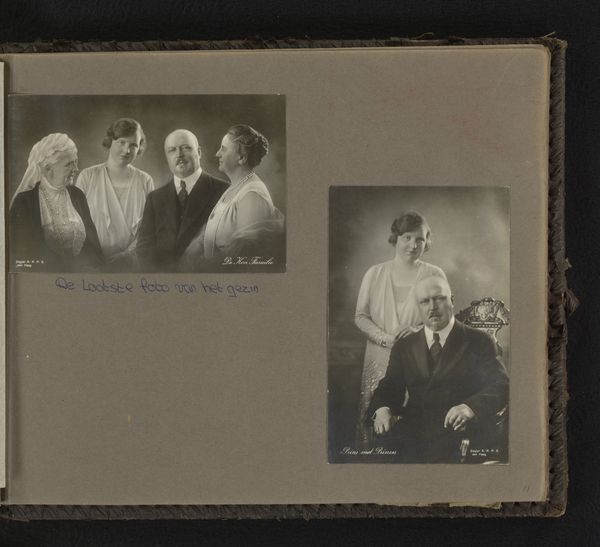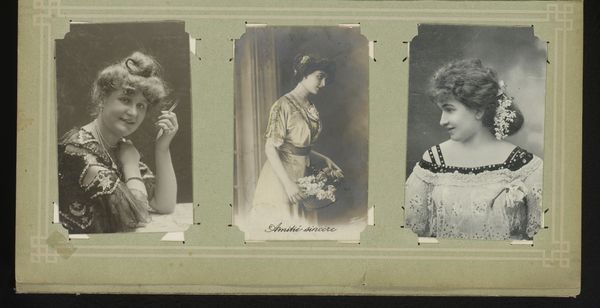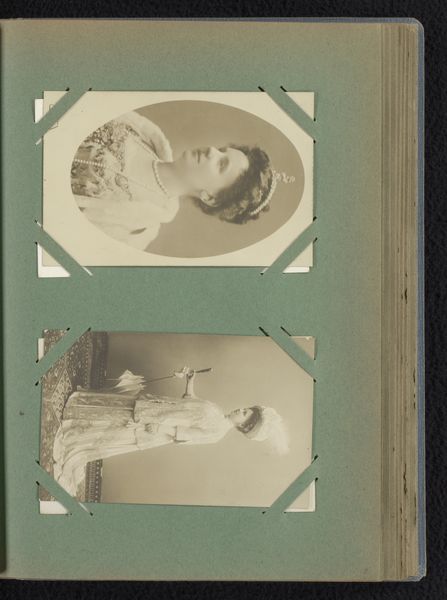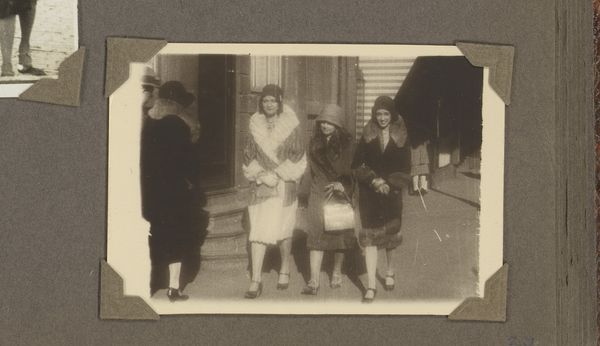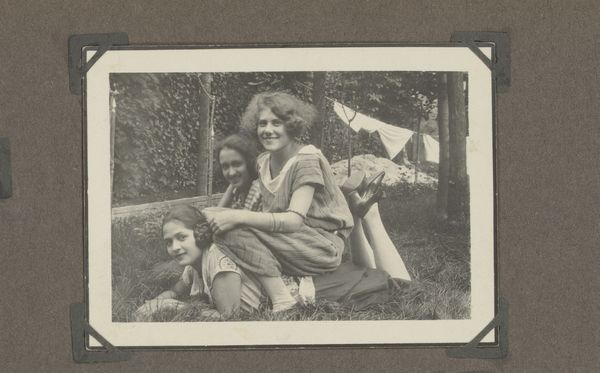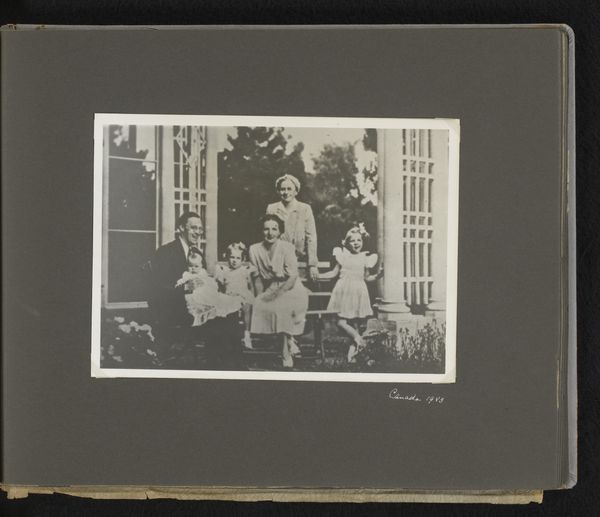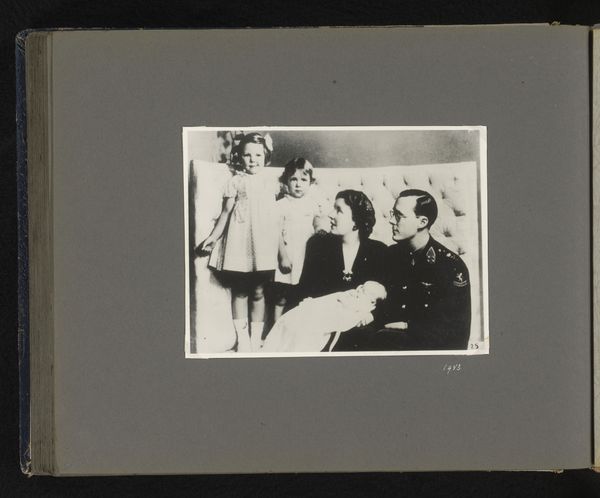
Vijf modellen met geborduurde mutsen van de Wiener Werkstätte 1920 - 1930
0:00
0:00
anonymous
Rijksmuseum
Dimensions: height 89 mm, width 137 mm
Copyright: Rijks Museum: Open Domain
Editor: Here we have a photograph entitled "Vijf modellen met geborduurde mutsen van de Wiener Werkstätte," placing it around 1920 to 1930. What strikes me is the… almost mass-produced quality despite the intricate detail of each embroidered hat. It feels like a collision of craft and industry. What can you tell me about this work? Curator: I’m drawn to how this piece reflects a tension inherent in the Wiener Werkstätte’s project: the ambition to elevate craft to the level of art, but also the necessity to engage with market forces. We see it so clearly in this photograph: a seemingly endless repetition of patterns on those caps. To what extent did industrial methods, and mass production impact these artisans' vision? Editor: So, you're suggesting the Werkstätte’s pursuit of art was always grounded in commerce? It makes you wonder about the social status and lived experiences of the women actually producing these embroideries. What materials were readily available at the time and how might they influence designs? Curator: Precisely! And let's think about those embroidered hats. Embroidery itself holds a complex history; it was once considered domestic craft, women's work. Bringing it into a space of 'high art,' while simultaneously relying on those traditional skills... where does the value truly reside? Is it in the design? The execution? Or the commodification? How does seeing it catalogued here, in a museum, recontextualize that labor now? Editor: I never thought about embroidery that way! Looking at it now, knowing this, I appreciate the piece on an entirely different level, particularly in its connection to commerce. I was viewing it for it's surface qualities, rather than looking beneath it. Curator: And that, precisely, is the enduring power of art – it forces us to confront those very material and social realities shaping its creation and consumption. Hopefully this gives a window to consider that labour in other works around you today!
Comments
No comments
Be the first to comment and join the conversation on the ultimate creative platform.
